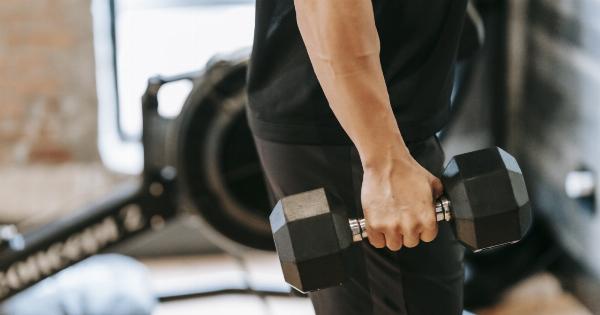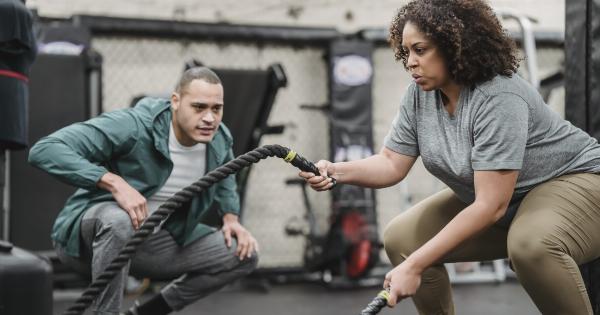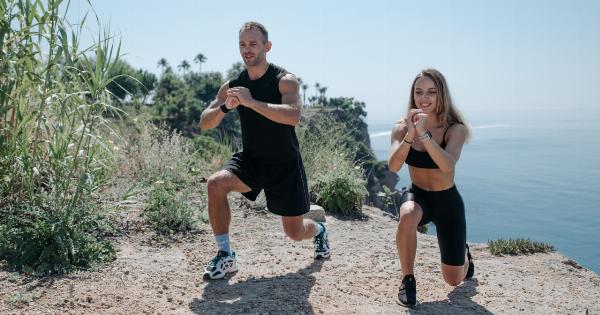Incontinence is a common condition that affects millions of people around the world, both men and women. It refers to the involuntary leakage of urine or feces, which can be embarrassing and have a significant impact on a person’s quality of life.
While there are various treatments available for incontinence, including medications and surgeries, exercises can also play a crucial role in managing and even eliminating this condition. In this article, we will explore some exercises that can help you get rid of incontinence for good.
1. Kegel Exercises
Kegel exercises, also known as pelvic floor exercises, are often recommended as a first-line treatment for incontinence. These exercises target the muscles of the pelvic floor, which play a key role in controlling urinary and bowel functions.
To perform Kegel exercises, start by identifying the muscles you need to target. These are the muscles you use to stop the flow of urine or prevent the passing of gas. Once you have identified them, contract and hold them for 5-10 seconds, then relax them for the same amount of time. Aim for 10-15 repetitions, three times a day.
2. Squats
Squats are a fantastic exercise for strengthening the muscles of the pelvic floor and the lower body. By performing squats regularly, you can improve your overall pelvic floor strength and control, reducing the risk of incontinence.
To perform a squat, stand with your feet shoulder-width apart, then lower your body down as if you were about to sit on a chair. Keep your back straight and your knees behind your toes. Return to the starting position and repeat for 10-15 repetitions, aiming for three sets.
3. Bridge Exercises
Bridge exercises target the gluteal muscles and the core, which can provide additional support to the pelvic floor muscles. To perform a bridge exercise, lie on your back with your knees bent and your feet flat on the floor.
Lift your hips off the ground while squeezing your glutes and engaging your core. Hold this position for a few seconds, then lower your hips back down. Aim for 10-15 repetitions, repeating for three sets.
4. Pilates
Pilates is a low-impact exercise method that focuses on strengthening the core muscles, including the pelvic floor. Many Pilates exercises emphasize controlled movements and deep breathing, which can enhance the connection between the mind and body.
By regularly practicing Pilates, you can improve your core strength and stability, which may help alleviate incontinence symptoms. Consider joining a Pilates class or following along with online tutorials.
5. Yoga
Yoga is another exercise modality that can be beneficial for individuals struggling with incontinence. Specific yoga poses can target the pelvic floor muscles, improve body awareness, and promote relaxation.
One such pose is the “malasana” or squat pose. To practice this pose, start by standing with your feet wider than hip-width apart. Lower your hips down towards the ground, keeping your heels on the floor, and bring your palms together in front of your chest.
Hold this position for a few breaths, then slowly stand back up. Incorporating yoga into your routine can help enhance muscle control and reduce incontinence symptoms.
6. Abdominal Exercises
The abdominal muscles play a crucial role in providing support to the pelvic floor. Strengthening your abdominal muscles can help improve overall core stability, thus reducing the risk of incontinence.
Exercises like planks, seated Russian twists, and bicycle crunches can target the abdominal muscles effectively. Aim for at least three sets of 10-15 repetitions, two to three times a week.
7. Aerobic Exercises
Engaging in regular aerobic exercises can provide numerous benefits for individuals with incontinence.
Aerobic activities like walking, swimming, cycling, or dancing can improve overall fitness, regulate body weight, reduce stress, and enhance bladder control. Aim for at least 150 minutes of moderate-intensity aerobic exercise or 75 minutes of vigorous-intensity exercise per week.
8. Biofeedback Training
Biofeedback training involves using sensors or electrodes to monitor and provide feedback on specific body functions, such as the ones related to the pelvic floor muscles.
This technique can help you become more aware of the muscle contractions and relaxation related to urinary control. By practicing biofeedback training, you can learn to identify and strengthen the correct muscles involved in maintaining continence.
9. Water Aerobics
Water aerobics is an excellent exercise option for individuals with incontinence, particularly those who may have joint or mobility issues. The buoyancy of the water reduces impact on the joints while providing resistance for muscle strengthening.
Water aerobics classes often include exercises like leg lifts, side kicks, and squats that can target the pelvic floor muscles.
10. Breathing Exercises
Breathing exercises, such as diaphragmatic breathing, can help improve the coordination and control of the pelvic floor muscles.
Diaphragmatic breathing involves deep inhalation, allowing the diaphragm to move downward and the pelvic floor muscles to relax. As you exhale, the diaphragm moves upward, and the pelvic floor muscles contract. Practicing diaphragmatic breathing can enhance relaxation and strengthen the pelvic floor muscles over time.
Conclusion
Dealing with incontinence can be challenging, but incorporating targeted exercises into your routine can significantly improve your control and reduce symptoms.
Kegel exercises, squats, bridge exercises, Pilates, yoga, abdominal exercises, aerobic exercises, biofeedback training, water aerobics, and breathing exercises can all contribute to a stronger pelvic floor and enhanced bladder control. Remember to consult with a healthcare professional before beginning any new exercise program, especially if you have underlying health conditions.
With dedication and consistency, you can take proactive steps towards getting rid of incontinence for good.





























